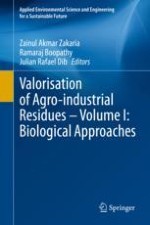2020 | OriginalPaper | Chapter
8. Analysis of Termite Microbiome and Biodegradation of Various Phenolic Compounds by a Bacterium Isolated from the Termite gut in Louisiana, USA
Authors : Seth Van Dexter, Ramaraj Boopathy
Published in: Valorisation of Agro-industrial Residues – Volume I: Biological Approaches
Publisher: Springer International Publishing
Activate our intelligent search to find suitable subject content or patents.
Select sections of text to find matching patents with Artificial Intelligence. powered by
Select sections of text to find additional relevant content using AI-assisted search. powered by
